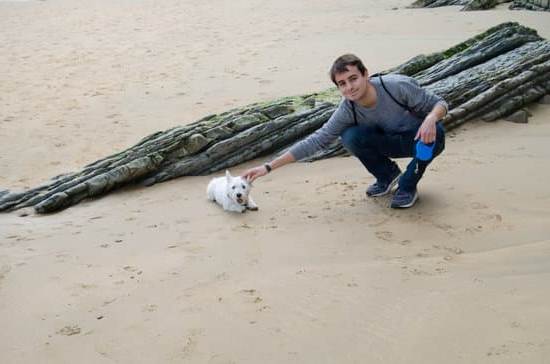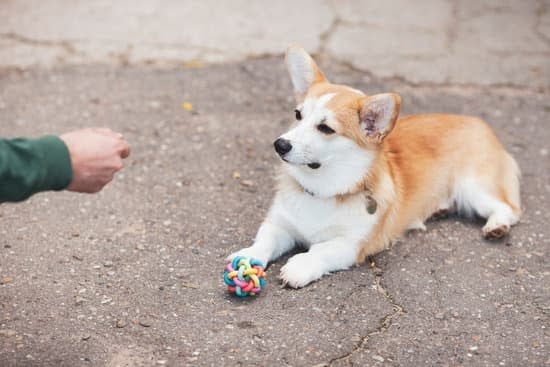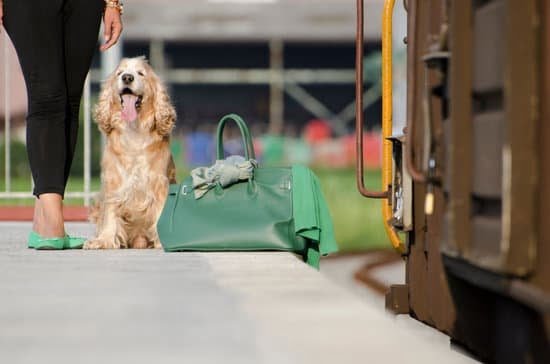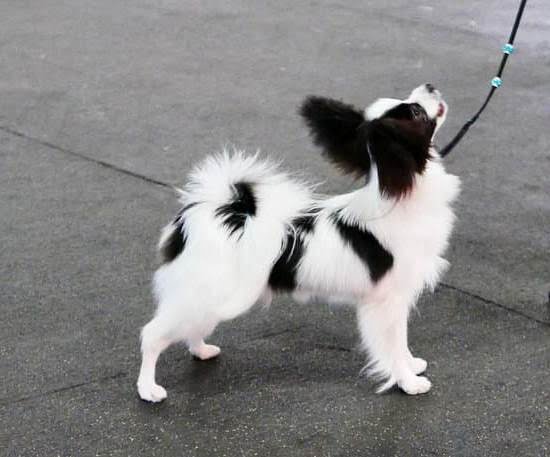Training your dog is an essential part of responsible pet ownership. In this article, we will explore the process of how to train your dog, from the foundational aspects of establishing a strong bond and trust, to addressing specific behavioral issues, and even advancing to more complex commands and tricks. Whether you have a new puppy or an older dog in need of some training, understanding the importance of this process is vital for a happy and well-behaved companion.
Establishing a strong foundation through bonding and trust with your furry friend is crucial in creating a positive learning environment for both you and your dog. This sets the stage for successful obedience training, which includes teaching simple commands like sit, stay, and come. We will also delve into methods of positive reinforcement using treats and praise to encourage good behavior, as well as leash training and house training tips.
With the assistance of this comprehensive guide, you’ll learn how to address common behavioral issues such as barking, chewing, and jumping. Furthermore, we will discuss advanced training techniques that will elevate the training experience for both you and your canine companion. Throughout this entire process, patience, consistency, and love are essential components that should not be overlooked. So let’s get started on this journey to better understanding how to effectively train your beloved pet.
Setting the Foundation
Building a strong foundation with your dog is crucial to successful training. Creating a bond and trust between you and your furry friend will set the stage for effective communication and understanding. This process is essential for both the dog and the owner, as it establishes a respectful and loving relationship.
Spending Quality Time Together
One of the first steps in setting a strong foundation with your dog is spending quality time together. Whether it’s through playtime, walks, or simply relaxing together, building a bond with your dog requires regular interaction. This not only helps strengthen the connection between you and your dog but also allows you to understand their behavior and personality better.
Consistent Training
Consistency is key when it comes to establishing trust and building a strong foundation with your dog. Consistent training sessions, using the same commands, tone of voice, and hand signals will help your dog understand what is expected of them. Additionally, consistency in your own behavior will help reinforce trust as your dog learns to predict how you will react in different situations.
Understanding Your Dog’s Needs
Taking the time to understand your dog’s physical, mental, emotional needs is crucial for building trust. By recognizing these needs, you can provide proper care, exercise, attention, and affection tailored to meet those specific requirements. This deeper understanding of your dog will create a stronger bond built on mutual respect and love.
By establishing a strong bond and trust with your dog through quality time together, consistent training, and understanding their needs, you are laying the groundwork for successful training in all other areas. Investing in this foundational relationship will make it easier for the two of you to navigate basic obedience training as well as address any behavioral issues that may arise. Remember that patience, consistency, positive reinforcement are key elements when setting this solid foundation with your beloved pet.
Basic Obedience Training
Understanding the Basics
Basic obedience training is an essential part of any dog’s development. Teaching your dog simple commands like sit, stay, and come not only ensures their safety but also strengthens the bond between you and your furry companion. These commands are the foundation for more advanced training, so it’s crucial to get them right from the start.
Patience and Consistency
When it comes to teaching your dog basic obedience commands, patience and consistency are key. Dogs thrive on routine, so it’s important to practice these commands regularly in different environments to reinforce their learning. Use the same cue words and hand signals each time you give a command and be patient with your dog as they learn – every pup learns at their own pace.
Positive Reinforcement
Positive reinforcement is a powerful tool when it comes to basic obedience training. Use treats and praise to reward your dog for following commands correctly. This not only motivates them to continue behaving well but also creates a positive association with the commands. Remember to keep training sessions short and fun – ending on a high note will leave both you and your dog feeling accomplished.
By focusing on these key aspects of basic obedience training, you can set your dog up for success in their training journey while building a strong foundation for more advanced skills down the line. Remember that every dog is unique, so be patient, consistent, and always show love and understanding during these training sessions.
Positive Reinforcement
When it comes to training your dog, positive reinforcement is a highly effective method that can help encourage good behavior. This involves using treats, verbal praise, and affection to reward your dog for displaying the desired behavior. By doing so, you are providing an incentive for your dog to repeat that behavior in the future. It also helps strengthen the bond between you and your furry friend.
It’s important to choose the right kind of treats for your dog when using positive reinforcement. Opt for small, soft treats that are easy for your dog to chew and swallow quickly. Also, be mindful of the number of treats you give to avoid overfeeding your pet.
Positive verbal cues such as “good boy/girl” or “well done” are equally valuable in reinforcing good behavior. Dogs thrive on their owner’s approval and love receiving praise as much as they enjoy getting treats.
In addition to using treats and praise during training sessions, it’s essential to be consistent with these rewards. Consistency is key in getting your dog accustomed to which behaviors are desirable and which are not. By positively reinforcing good behavior consistently, you will create a strong foundation for teaching your dog obedience and preventing behavioral issues from arising.
| Training Tips | Important Points |
|---|---|
| Choose small, soft treats | Avoid overfeeding while rewarding |
| Use consistent verbal cues | Dogs thrive on owner’s praise |
| Be consistent with rewards | Create foundation for obedience training |
Leash Training
When starting leash training, it’s crucial to use the right equipment. A properly fitted harness or collar and a sturdy leash are essential. Your dog should feel comfortable and secure while wearing the harness or collar, and the leash should be an appropriate length for your dog’s size.
During the initial stages of leash training, it’s important to keep walks short and positive. Use treats and verbal praise to reward your dog for walking nicely beside you without pulling on the leash. Gradually increase the length of your walks as your dog becomes more accustomed to walking politely on a leash.
It’s also important to remain patient and understanding throughout the leash training process. Dogs thrive on positive reinforcement, so be sure to praise and reward good behavior consistently. If your dog becomes distracted or tries to pull on the leash, calmly redirect their attention back to walking beside you before resuming your walk.
| Key Points | Data |
|---|---|
| Equipment | Properly fitted harness or collar, sturdy leash |
| Training Technique | Short, positive walks; use of treats and verbal praise; redirection of attention when necessary |
| Patience | Patient and consistent approach with positive reinforcement |
House Training
Potty training is a crucial step in the overall training process for your dog. Not only does it help prevent messes in the house, but it also promotes good habits and hygiene for your furry friend. Here are some valuable tips and tricks to make the house training process as smooth and effective as possible:
- Establish a routine: Dogs thrive on consistency, so creating a regular schedule for potty breaks can help them understand when it’s time to go outside. Take your dog out first thing in the morning, after meals, before bedtime, and any time they show signs of needing to go.
- Use positive reinforcement: When your dog goes potty outside, be sure to offer plenty of praise and maybe even a treat. This positive association will encourage them to continue going outside rather than inside the house.
- Monitor their behavior: Keep an eye on your dog’s behavior and body language to anticipate when they need to go potty. Signs such as sniffing around, circling, or whining can indicate that it’s time for a bathroom break.
In addition to these tips, it’s important to remember that accidents will happen during the house training process. It’s essential not to scold or punish your dog for accidents indoors, as this can create fear or anxiety around potty training. Instead, remain patient and consistent in your approach, and over time, your dog will learn where they should go potty.
Addressing Behavioral Issues
When it comes to addressing behavioral issues in dogs, it’s essential to have patience and consistency. Many dog owners struggle with problems such as barking, chewing, and jumping, but with the right approach, these issues can be effectively managed. Here are some tips for dealing with these common behavioral problems:
- Barking: Excessive barking can be a nuisance for both the dog owner and their neighbors. To address this issue, it is important to understand the root cause of the barking. Is your dog bored, anxious, or seeking attention? Once you have identified the trigger, you can take steps to address it through training and behavior modification techniques.
- Chewing: Dogs often chew as a way to alleviate boredom or anxiety. Providing your dog with plenty of toys and engaging in regular exercise can help redirect their chewing behavior. It’s also crucial to puppy-proof your home by keeping valuable items out of reach until your dog has learned what is appropriate to chew on.
- Jumping: Many dogs jump up on people as a way of greeting or seeking attention. To discourage this behavior, it’s important to teach them an alternative greeting such as sitting politely. Consistently ignoring your dog when they jump up and only giving attention when all four paws are on the ground can help modify this behavior.
By understanding the underlying reasons for barking, chewing, and jumping, you can implement effective strategies for managing these behavioral issues in your dog.
Remember that addressing behavioral issues requires time and effort from both you and your dog. By practicing patience, consistency, and positive reinforcement, you can help your furry friend develop good habits and become a well-behaved member of the family. Underlying all of these strategies is the importance of love and understanding as you work together with your canine companion.
Advanced Training
Once your dog has mastered basic obedience commands like sit, stay, and come, you can begin to introduce more complex commands and tricks. Advanced training not only provides mental stimulation for your dog but also strengthens the bond between you and your furry friend. Some examples of advanced commands include “heel,” “leave it,” and “go to your bed.” Teaching your dog these commands requires patience, consistency, and positive reinforcement.
When introducing advanced commands to your dog, it’s important to break down each new command into smaller steps. For example, when teaching the “heel” command, start by practicing walking in a straight line with your dog on a loose leash. Gradually increase the difficulty by adding distractions or changing directions. Always use positive reinforcement such as treats or praise when your dog successfully follows a new command.
In addition to advanced obedience training, you can also teach your dog fun tricks like rolling over, shaking paws, or playing dead. These tricks not only impress friends and family but also provide mental stimulation for your dog. As with any training, it’s crucial to be patient and consistent throughout the process. Advanced training may take more time and effort than basic obedience training, but the rewards are well worth it in the end.
Conclusion
In conclusion, training your dog is a rewarding and fulfilling process that builds a strong bond between you and your furry friend. Throughout this article, we have discussed the various aspects of dog training, from setting the foundation by establishing trust to addressing behavioral issues and even advancing to more complex commands and tricks.
It is crucial to emphasize the importance of patience, consistency, and love in the training process. Training your dog is not just about teaching them commands; it’s about building a relationship based on trust and understanding.
Patience is key when it comes to training your dog. Every pup learns at their own pace, and it’s essential to remain calm and patient during the training process. Consistency is also vital in reinforcing good behavior and ensuring that your dog understands what is expected of them. By being consistent with your commands, expectations, and rewards, you will help your dog learn more effectively.
Above all, love plays a significant role in the training process. Building a strong bond with your dog based on love and trust will make the training process enjoyable for both you and your furry companion.
Remember that every dog is unique, so be patient, stay consistent, and always show love and affection towards your pet as you embark on this journey of training them. With these qualities in mind, you can look forward to a well-trained and well-behaved dog who brings joy into your life every day.
Frequently Asked Questions
What Is the Process of Training a Dog?
The process of training a dog involves consistent and repetitive teaching of desired behaviors using positive reinforcement. This can include commands, such as sit, stay, and come, as well as potty training and leash manners. It also involves establishing a strong bond with the dog and understanding their individual needs and motivations.
How Do You Train a Dog 10 Steps?
Training a dog in 10 steps involves setting clear goals, establishing leadership, using positive reinforcement, being patient and consistent, socializing the dog, addressing behavioral issues promptly, providing mental stimulation, exercising the dog regularly, seeking professional help if needed, and staying committed to ongoing training.
What Is a Good Way to Train Your Dog?
A good way to train your dog is by creating a positive learning environment through rewards-based training methods. This means using treats, praise, toys or other rewards to reinforce good behavior rather than punishing bad behavior.
Consistency is also key in training a dog effectively – setting clear rules and expectations helps the dog understand what is expected of them. Additionally, finding an appropriate training approach based on your dog’s breed and personality can help make the process more successful.

Welcome to the blog! I am a professional dog trainer and have been working with dogs for many years. In this blog, I will be discussing various topics related to dog training, including tips, tricks, and advice. I hope you find this information helpful and informative. Thanks for reading!





